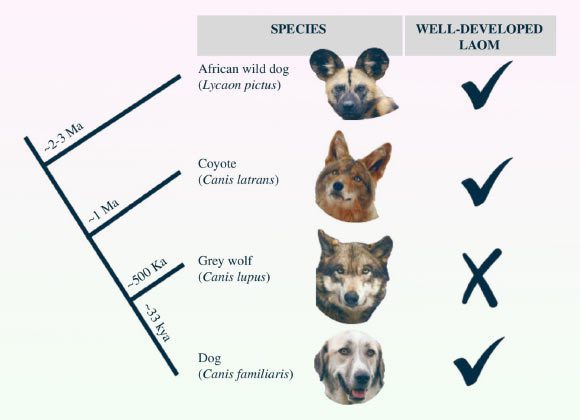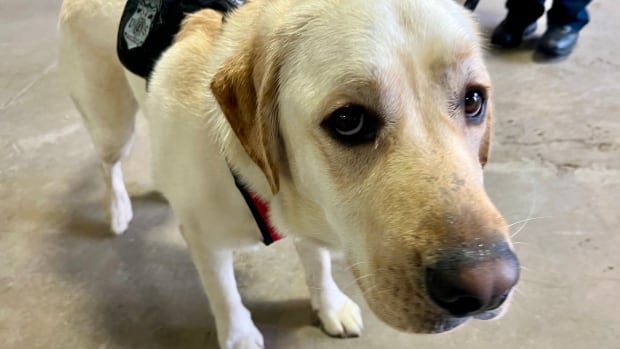Recent studies suggest that a muscle called the levator anguli oculi medialis (LAOM) is unique to dogs (Canis familiaris) and evolved due to domestication. This muscle raises the inner eyebrows, resulting in the ‘puppy dog eyes’ expression. In new research, scientists at Baylor University tested whether the LAOM is a derived trait in dogs by (i) examining the facial expression muscles of a closely related and ancestral wild Canis species, the coyote (Canis latrans) and (ii) comparing their results with other Canis and canid species. They discovered that coyotes have a well-developed LAOM like dogs, which differs from the modified/absent LAOM in gray wolves. Their findings challenge the hypothesis that the LAOM developed due to domestication.
Like dogs, coyotes have a well-developed LAOM that gives both species the ability to make ‘puppy dog eyes.’ Image credit: Cunningham et al., doi: 10.1098/rsos.241046.
“Our findings suggest that the ability to produce ‘puppy dog eyes’ is not a unique product of dog domestication but rather an ancestral trait shared by multiple species in the Canis genus,” said Patrick Cunningham, a Ph.D. student at Baylor University.
“This raises fascinating questions about the role of facial expressions in communication and survival among wild canids.”
In the study, Cunningham and his colleagues compared the facial muscles of coyotes, dogs and gray wolves.
While both dogs and coyotes possess a well-developed LAOM, the muscle is either modified or absent in gray wolves.
This challenges the hypothesis that human-driven selection was solely responsible for the development of the inner brow raiser in dogs
Instead, the study suggests that the LAOM was likely present in a common ancestor of dogs, coyotes and gray wolves but was later lost or reduced in wolves.
The researchers also documented significant intraspecific variation in the facial muscles of coyotes, particularly those related to brow and lip movements.
A genetic analysis was used to rule out significant dog ancestry in the coyote specimens, reinforcing that these traits are not a result of crossbreeding.
“Our work reveals that coyotes and dogs share not just behavioral similarities, but also a fascinating evolutionary history that includes the ability to make expressions that we once thought were unique to domesticated animals,” Cunningham said.
“This discovery has broader implications for understanding the evolution of facial expressions in mammals.”
“The LAOM may have originally evolved for functions related to vision and eye movements, rather than communication with humans, as previously thought.”
“Future studies on other canid species, including red wolves and African wild dogs, may further illuminate the role of facial expressions in survival and species communication.”
A paper on the findings was published in the journal Royal Society Open Science.
_____
Patrick Cunningham et al. 2024. Coyotes can do ‘puppy dog eyes’ too: comparing interspecific variation in Canis facial expression muscles. R. Soc. Open Sci 11 (10): 241046; doi: 10.1098/rsos.241046




